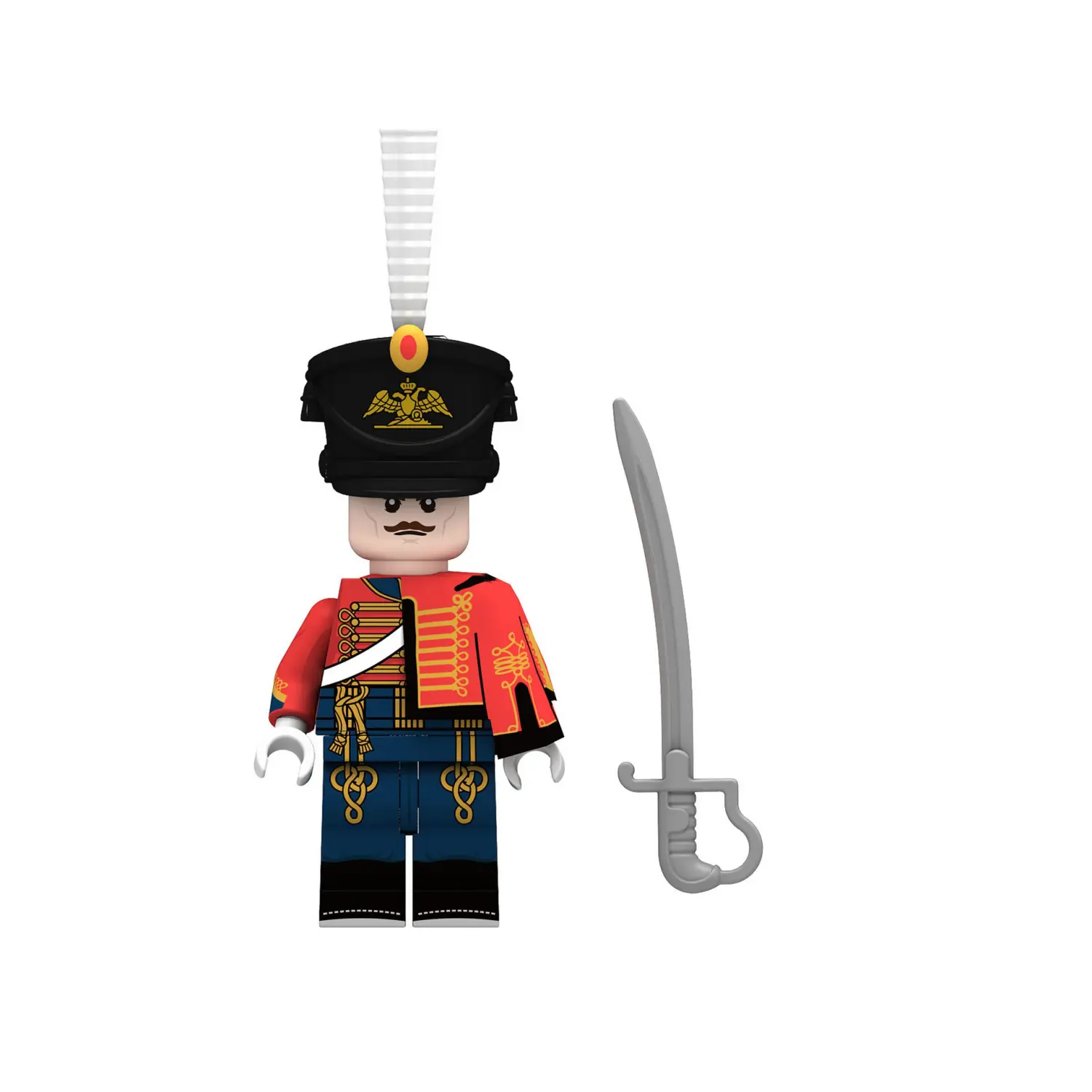This image displays a toy minifigure representing a Russian Life Guard Hussar, a member of the elite light cavalry of the Imperial Russian Army during the Napoleonic Wars era.
Here is a detailed breakdown of the figure and its historical significance:
The Figure: Russian Life Guard Hussar This figure represents the most flamboyant and dashing type of soldier on the Napoleonic battlefield: the Hussar.
-
Uniform: The figure is dressed in the spectacular uniform that made Hussars famous. He wears a Scarlet Red Dolman (a tight-fitting jacket) covered in elaborate Gold Braiding (known as frogging) across the chest.
-
Trousers: He wears tight blue breeches which are also decorated with intricate gold knots (Hungarian knots) on the thighs. This Red/Blue/Gold color scheme specifically identifies him as a member of the Life Guard Hussar Regiment (Leib-Gvardii Gusarskii Polk).
-
Headgear: He wears a tall, black Shako (a cylindrical military cap). Key identifiers include the large gold Double-Headed Eagle plate on the front (the symbol of the Russian Tsar) and a very tall White Plume reaching high above the hat.
-
Weapon: As a light cavalryman, his primary weapon is a Curved Sabre. Unlike the straight swords of the heavy Cuirassiers (like N007), Hussars used curved blades designed for slashing while riding at high speeds.
-
Facial Features: He sports a mustache, which was a distinctive and often mandatory feature for cavalrymen of this period to enhance their aggressive appearance.
Historical Background: Hussars were the “rock stars” of the Napoleonic wars. They were light cavalry used for scouting, skirmishing, and pursuing retreating enemies. They were famous for their reckless bravery, their hard-drinking lifestyle, and their incredibly expensive, gold-covered uniforms. The Russian Life Guard Hussars were the personal escort of Tsar Alexander I. They were considered the cream of the Russian light cavalry and fought in major battles like Austerlitz, Borodino, and Leipzig.



Reviews
There are no reviews yet.